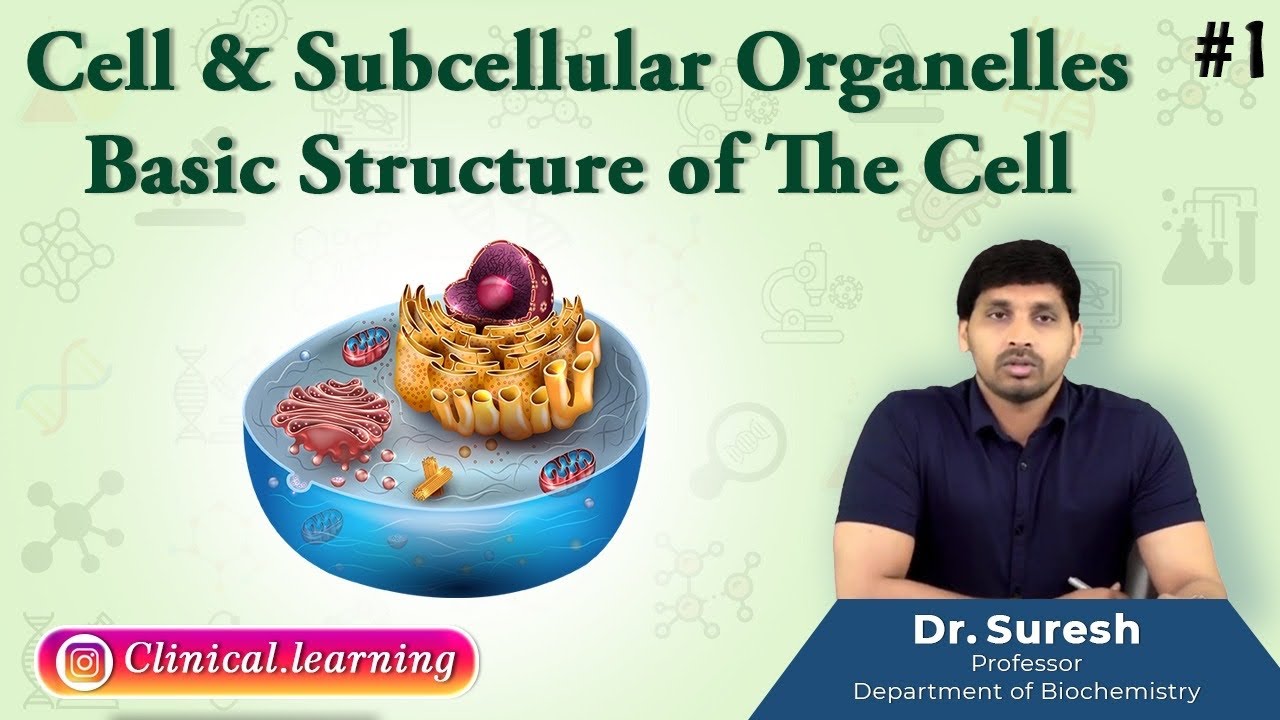La CÉLULA EUCARIOTA explicada: sus organelos celulares, características y funcionamiento🦠
Summary
TLDRThis video script delves into eukaryotic cells, highlighting their defining features like the nucleus and organelles. It explores the cell's functions, including reproduction, nutrition, and environmental interaction. The script distinguishes between plant, animal, fungal cells, and unicellular eukaryotes, emphasizing their unique organelles and roles in forming complex organisms or living independently.
Takeaways
- 🧬 Eukaryotic cells are the building blocks of complex organisms like animals, plants, fungi, and humans, characterized by the presence of a nucleus and other specialized organelles.
- 🌿 The nucleus is a defining feature of eukaryotic cells, housing the cell's genetic material and playing a crucial role in gene expression.
- 🔋 Mitochondria are often referred to as the 'powerhouses' of the cell, generating most of the cell's supply of ATP, the energy currency of the cell.
- 🌀 The endoplasmic reticulum is a membranous network involved in the synthesis of proteins and lipids, with a 'rough' region studded with ribosomes for protein production.
- 📦 The Golgi apparatus modifies, sorts, and packages proteins and lipids for use within the cell or for secretion outside the cell.
- 🍃 Plant cells contain large vacuoles that can occupy up to 80% of the cell's volume, serving storage and maintaining cell turgor.
- 🚀 Eukaryotic cells can move, facilitated by structures like cilia and flagella, which are essential for the mobility of certain cells like sperm.
- 🤝 In multicellular organisms, eukaryotic cells communicate and interact with each other to form tissues and perform complex functions as a coordinated unit.
- 🌱 Plant cells have chloroplasts, which are the sites of photosynthesis, allowing plants to convert sunlight into chemical energy for growth.
- 🔬 Fungal cells are distinct, containing a cell wall made of chitin and lacking chloroplasts, and they play a vital role in decomposition and nutrient cycling in ecosystems.
Q & A
What is a eukaryotic cell?
-A eukaryotic cell is a type of cell that forms animals, plants, fungi, and human beings. It is characterized by the presence of a nucleus and other specialized structures called organelles.
What are the main differences between eukaryotic and prokaryotic cells?
-Eukaryotic cells differ from prokaryotic cells by having a nucleus and other membrane-bound organelles, such as the endoplasmic reticulum, mitochondria, and vacuoles.
What is the function of the nucleus in eukaryotic cells?
-The nucleus is the most outstanding organelle in eukaryotic cells, housing the genetic material and playing a crucial role in gene expression and interaction with the intracellular environment.
What are mitochondria and what is their role in eukaryotic cells?
-Mitochondria are double-membraned structures known as the 'energy machines' of eukaryotic cells, responsible for producing the majority of ATP needed by the cell.
What is the endoplasmic reticulum and its main function?
-The endoplasmic reticulum is a membranous structure that originates from the nuclear membrane, with a smooth and a rough region, primarily involved in protein and lipid synthesis.
What is the role of the Golgi apparatus in eukaryotic cells?
-The Golgi apparatus is a stack of flattened sacs involved in modifying, sorting, and packaging proteins synthesized in the endoplasmic reticulum for transport to other parts of the cell or secretion outside the cell.
What are lysosomes and their function in eukaryotic cells?
-Lysosomes are small organelles responsible for intracellular digestion of damaged proteins and the release of nutrients, as well as the degradation of toxic substances.
What is the cytoskeleton and its importance in eukaryotic cells?
-The cytoskeleton is a network of internal filamentous proteins that maintain cell shape, facilitate intracellular communication, and support the movement of proteins and organelles within the cell.
How do eukaryotic cells reproduce?
-Eukaryotic cells can reproduce both sexually, through the fusion of two gametes, and asexually, through mitotic divisions where each cell divides to form two genetically identical cells.
What are the types of eukaryotic cells mentioned in the script?
-The script mentions plant cells, animal cells, fungal cells, and unicellular eukaryotic organisms as the types of eukaryotic cells.
How do plant cells differ from animal cells?
-Plant cells differ from animal cells by having a cell wall and chloroplasts, which are specialized for photosynthesis, and they are autotrophic, capable of producing their own food from inorganic sources.
Outlines

This section is available to paid users only. Please upgrade to access this part.
Upgrade NowMindmap

This section is available to paid users only. Please upgrade to access this part.
Upgrade NowKeywords

This section is available to paid users only. Please upgrade to access this part.
Upgrade NowHighlights

This section is available to paid users only. Please upgrade to access this part.
Upgrade NowTranscripts

This section is available to paid users only. Please upgrade to access this part.
Upgrade NowBrowse More Related Video

Cell Theory and Organelles

Organelas Celulares : Estrutura celular e citoplasma - Animação 3D

Biology: Cell Structure I Nucleus Medical Media

Cell Basics (Prokayrotes, Eukaryotes, Plants)

1. Cell & Subcellular Organelles - BASIC STRUCTURE OF THE CELL

SISTEM ORGANISASI KEHIDUPAN | SEL HEWAN DAN SEL TUMBUHAN
5.0 / 5 (0 votes)